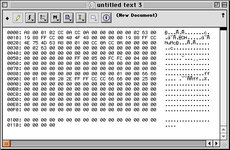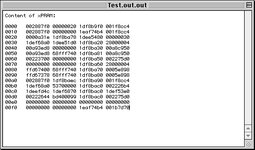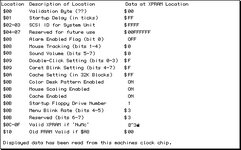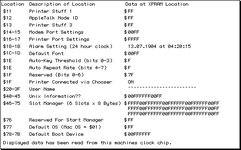MightyMike
Member
Hello folks!
I recently bought a PowerBook Wallstreet/PDQ. Of course the PRAM battery is dead. That's nothing too bad but since I'm a software guy I thought that it should be possible to save the (x)PRAM to disk on shutdown and restore it after reboot if a PRAM reset is detected (e.g. year < 2024 or year >= 2039). So the last volume settings, display brightness, region (Date & Time) and so on are restored.
I know there are some solutions to achieve my needs but... Where's the fun part when just using them? I really want to understand things how they were done back in the days.
I really want to understand things how they were done back in the days.
Btw: "PRAM-Reader" (https://macintoshgarden.org/apps/pram-reader) doesn't work at all. Restoring the saved state leads to a black screen and a complete hang.
What I've found out:
And here comes the tricky part: I want to do everything in REALbasic! (That's the language I'm most familiar with on Mac.)
I hope someone out there has some advice for me.
Thank you all!
Mike
I recently bought a PowerBook Wallstreet/PDQ. Of course the PRAM battery is dead. That's nothing too bad but since I'm a software guy I thought that it should be possible to save the (x)PRAM to disk on shutdown and restore it after reboot if a PRAM reset is detected (e.g. year < 2024 or year >= 2039). So the last volume settings, display brightness, region (Date & Time) and so on are restored.
I know there are some solutions to achieve my needs but... Where's the fun part when just using them?
Btw: "PRAM-Reader" (https://macintoshgarden.org/apps/pram-reader) doesn't work at all. Restoring the saved state leads to a black screen and a complete hang.
What I've found out:
- "Old" PRAM is 20bytes, "extended" PRAM is 236bytes (according to "Inside Macintosh, Parameter RAM Utilities", from 1994).
- Getting the pointer for the PRAM is done by using "GetSysPPtr".
- Changing values is done by changing them directly in memory.
- Saving is done by using "WriteParam".
And here comes the tricky part: I want to do everything in REALbasic! (That's the language I'm most familiar with on Mac.)
I hope someone out there has some advice for me.
Thank you all!
Mike





